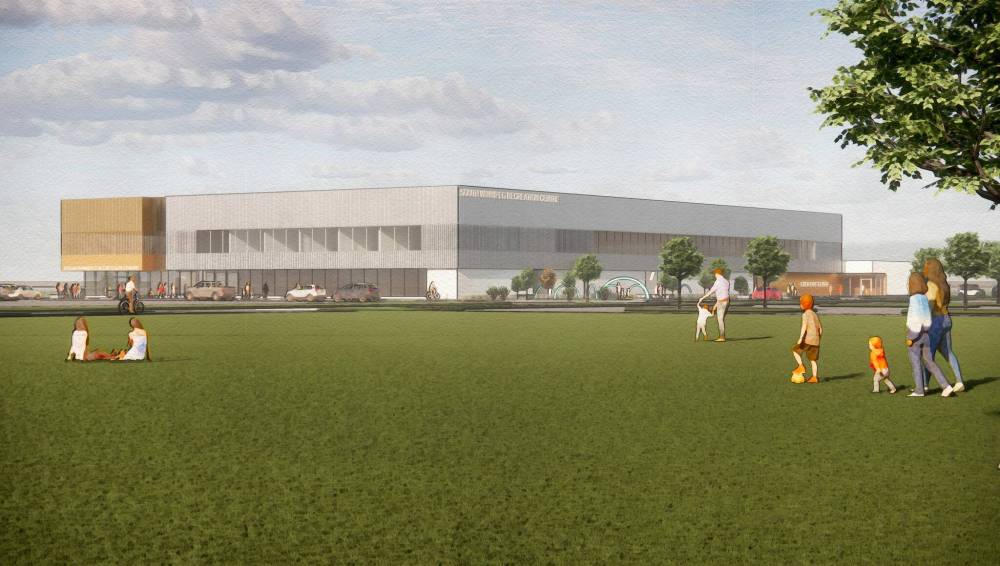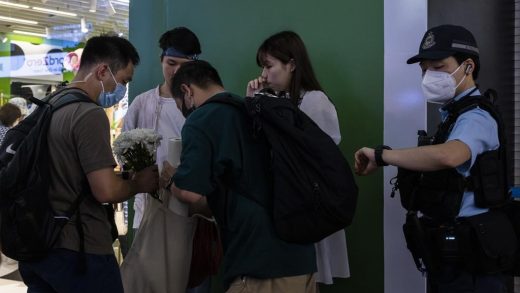
The impending closure of Happyland Pool has been in the news a lot lately. So have vacant property fires and leftover rubble in inner-city neighbourhoods.
Believe it or not, those are the same topic. But I’ll come back to that.
The City of Winnipeg’s most recent budget had planned to close three pools this year: Eldon Ross Pool in Brooklands, Windsor Park Pool, and Happyland Outdoor Pool in St. Boniface. In the end, Eldon Ross and Windsor Park got a one- and two-year reprieve, respectively. But Happyland still got the axe.
SUPPLIED There’s no money to repair older pools in Winnipeg, but there’s money for the South Winnipeg Recreation Campus, already $23 million over budget before construction’s even begun.
So, determined residents in St. Boniface set off to raise the money needed to keep their pool open for one more season. As of last week, those community champions had managed to pull together over $70,000 of the $85,000 annual cost to operate the Happyland Pool.
It’s unfortunate that the city has forced these good citizens to go through with this exercise. Because it was never about affording the annual operating cost of the pool. That amount comes to less than 0.004 per cent of the city’s $2.2-billion annual operating budget.
It’s just a drop in the proverbial bucket, or pool in this case.
What it can’t afford is the $3.6 million in capital upgrades the pool needs over the next 10 years. Add in the $10 million needed for Eldon Ross and $4 million for Windsor Park, and that’s starting to be real money, money the city doesn’t have.
At least not for older neighbourhoods.
Because out in Waverley West, planning for construction of the South Winnipeg Recreation Campus, a facility which is slated to house multiple pools, gyms, athletic facilities and running tracks, continues unabated, despite already being $23 million over budget, before shovels have even hit the ground.
So are the closures of Eldon Ross, Windsor Park and Happyland Pools paying for the South Winnipeg Recreation Campus?
Yes, but not necessarily in the way you think.
You see, in the urban development pattern adopted towards the end of the 1940s by nearly every city in North America, including Winnipeg, neighbourhoods are built all at once, to a finished state, then are frozen in amber, protected from change through regulations like zoning.
But that comes at a cost.
Neighbourhoods that don’t evolve can only age, stagnate, and eventually, decline. They’re at their most successful the day they’re built, and then it’s all downhill from there. So people move out.
Then we build a new one on the edge and start the cycle over.
Unfortunately, this development pattern doesn’t create enough taxable value to maintain itself, giving rise to a “throwaway” culture of urban development. Build it, extract what you can from it, then abandon it.
Not able to keep up financially, the city falls into the same approach: build a piece of infrastructure, neglect it, abandon it. It’s why the potholes are always winning.
Worse yet, we end up with the City of Winnipeg acting like a slumlord in older neighbourhoods, continuing to extract tax revenue while doing no maintenance, and providing fewer and fewer services.
Then, when facilities reach the end of their service life, they’re abandoned: the Kelvin Community Centre, Norwood Pool, the Arlington Bridge, the Portage and Main Concourse, Happyland Pool.
This is the logical outcome of this type of development pattern.
If this reminds you of vacant property fires and piles of rubble left over by some property owners after years of extracting rent in the inner-city, it should.
In dealing with these property owners, we default to a “tough as nails” approach, hoping that the next punishment will finally be the one to incentivize them to clean up and invest in renovating their property.
They’re simply following the same business model as the city. Why would a private property owner ever decide to invest their money where the city itself refuses to?
But we don’t need to continue this way. Instead of acting like an economic vulture, the city could act like an economic gardener.
Planners know that extending and expanding roads is one of the main tools we use to incentivize this insolvent development pattern, the one that’s eroding the city’s finances while making our neighbourhoods worse places to live.
To turn things around, saving our pools while strengthening the city’s finances, we need to start doing the opposite of expanding roads: creating more walkable places.
That’s why, whether we’re talking about Happyland Pool in St. Boniface, slip lanes in Osborne Village, pedestrians at Portage and Main, piles of rubble in Spence, or fourplexes everywhere, it’s all part of the same conversation.
A conversation we need to have about what makes our city financially sustainable, and what doesn’t.
Otherwise, in a few decades it’ll be Waverley West fighting to keep their aging facility open while we build afresh in the city’s newest neighbourhoods of St. Adolphe Creek and Niverville West.
If we don’t bankrupt our city first.
Michel Durand-Wood lives in Elmwood and has been writing about municipal issues since 2018.


